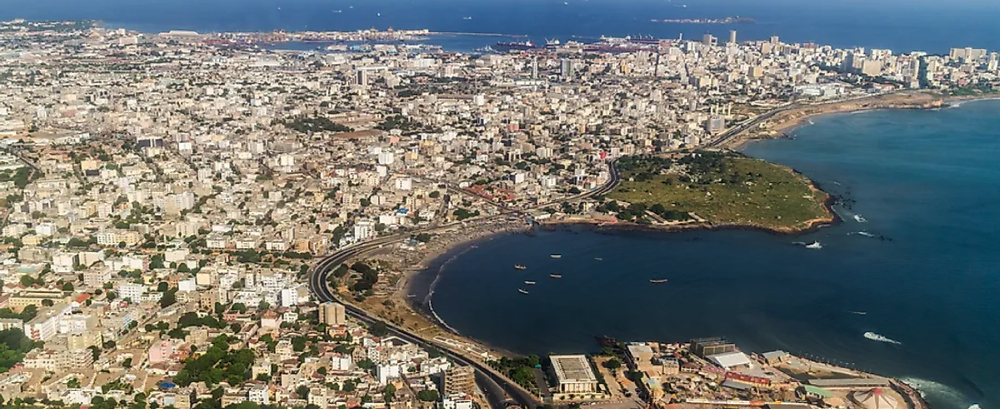
Burkina Faso
April 12, 2025
Ghana
April 12, 2025Senegal, a West African nation, is endowed with a variety of mineral resources that contribute to its economy. The country has been increasingly attracting foreign investment in its mining sector, which has seen significant growth over the past few decades. Here’s an overview of the key mineral resources in Senegal:
Key Mineral Resources
Phosphates:
Overview: Senegal is one of the leading producers of phosphates in Africa. The main phosphate deposits are located in the Taïba and Lam-Lam areas, particularly in the Thiès region.
Reserves: Senegal’s phosphate reserves are substantial, and the country has been mining phosphates for many decades. These reserves are sufficient to support long-term production and make Senegal a significant player in the global phosphate market.
Gold:
Overview: Gold is one of Senegal’s most important mineral resources. The country has seen a surge in gold exploration and mining activities in recent years, with the development of several large-scale mines.
Major Gold Mines: The Sabodala-Massawa complex is the largest gold mine in Senegal. Other significant gold projects include the Mako gold mine and the Gounkoto mine.
Reserves: Senegal’s gold reserves are considerable, with ongoing exploration activities suggesting potential for further discoveries.
Zircon and Titanium Minerals (Ilmenite and Rutile):
Overview: Senegal has significant deposits of zircon and titanium minerals, particularly in the Grande Côte region along the northern coast. The heavy mineral sands in this region contain valuable minerals like zircon, ilmenite, and rutile.
Reserves: The reserves of zircon and titanium minerals in Senegal are vast, with the country being a notable producer on the global stage.
Iron Ore:
Overview: Iron ore deposits are found in Senegal, particularly in the Falémé region in the southeast. While the development of these resources is still in its early stages, they hold significant potential for the future.
Reserves: The iron ore reserves in Senegal are promising, with potential for future exploration and development.
Heavy Mineral Sands:
Overview: In addition to zircon and titanium minerals, the heavy mineral sands in Senegal’s coastal regions also contain valuable deposits of other minerals like monazite and garnet.
Reserves: The heavy mineral sand deposits are extensive, providing opportunities for future mining and development.
Limestone:
Overview: Limestone is abundant in Senegal, particularly in the western part of the country. It is a key raw material for the cement industry.
Reserves: The limestone reserves in Senegal are extensive, supporting a robust cement industry that supplies both domestic and regional markets.
Petroleum and Natural Gas:
Overview: Senegal has discovered significant offshore oil and natural gas reserves, particularly in the Sangomar and Greater Tortue Ahmeyim fields. These discoveries have the potential to transform Senegal into a significant energy producer.
Reserves: The reserves of oil and natural gas are considerable, with ongoing exploration and development activities aimed at bringing these resources into production.
Attapulgite Clay:
Overview: Senegal is one of the few countries in the world with significant deposits of attapulgite clay, which is used in various industrial and agricultural applications.
Reserves: The attapulgite reserves in Senegal are substantial, supporting both local use and exports.
Investment and Extraction Situation
Phosphate Mining: Phosphate mining is the backbone of Senegal’s mining industry. The country has long been a significant exporter of phosphates, and the government continues to promote investment in this sector to maintain and expand production.
Emerging Gold Sector: The gold mining sector in Senegal has seen rapid growth, attracting substantial foreign investment. The development of large-scale mines, particularly in the eastern part of the country, has made Senegal an increasingly important player in the West African gold industry.
Oil and Gas Potential: The discovery of offshore oil and natural gas reserves has the potential to significantly boost Senegal’s economy. The government is working with international oil companies to develop these resources and bring them into production.
Artisanal and Small-Scale Mining (ASM): ASM is prevalent in Senegal, particularly for gold. While it plays an important role in local economies, ASM faces challenges such as lack of formalization, environmental degradation, and safety concerns. The government is working to regulate and formalize these activities to improve sustainability and productivity.
Environmental and Social Impact: Mining and resource extraction activities in Senegal are subject to environmental regulations aimed at minimizing negative impacts. The government and international organizations are focusing on sustainable mining practices and ensuring that communities benefit from resource development.


